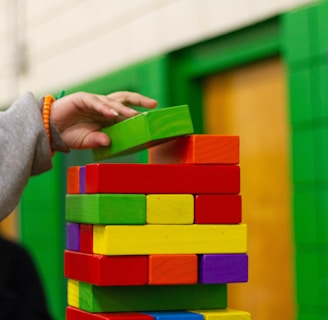Best Methods for Teaching Foreign Languages to Children
Immersion, games, Montessori, TPR… Discover in this new publication the most effective ways/methods to teach children a foreign language (like French or English) in a fun and engaging way!
12/20/20243 min read


The Best Language Learning Techniques for Children
Learning a foreign language from an early age is a real advantage for children's cognitive development. At Kidioma, we use teaching methods tailored to children aged 3 to 9 years to help them learn while having fun. But what are the best techniques for teaching a new language to children? These approaches are not mutually exclusive: they can be combinedto maximize learning, each bringing complementary benefits. Here is an overview of the most effective methods.
1. Immersive Learning: A Natural Approach
Language immersion is one of the most effective methods for learning a foreign language. It involves exposing children to the target language naturally by integrating it into their daily lives.
Using the foreign language in real-life contexts (games, stories, songs, daily routines).
Speaking only in English or French during workshops, encouraging children to adapt and understand through listening.
Encouraging children to repeat common phrases, rephrase, and communicate spontaneously.
Creating a visually and auditorily rich environment with posters, labeled objects, and songs in the target language.
This method promotes intuitive acquisition, similar to how a child learns their native language, without pressure or formal instruction.
2. Play-Based Learning: A Powerful Motivator
Educational games are essential for capturing children's attention and facilitating vocabulary acquisition. Learning through play boosts motivation and improves word and grammar retention.
Role-playing games: Acting out everyday situations (shopping, ordering at a restaurant, greeting a friend) allows children to use vocabulary in context.
Flashcards and memory games: Associating words with images helps establish a visual link and aids memorization.
Songs and nursery rhymes: Learning songs makes it easier to remember sounds and pronunciation while developing rhythm and intonation.
Language treasure hunts: Searching for objects by following instructions in the target language enhances listening and comprehension skills.
At Kidioma, we incorporate play into our workshops to make learning fun and dynamic while fostering positive group interaction.
3. Spaced Repetition: Strengthening Memory
Spaced repetition is a scientific technique that helps anchor vocabulary and grammatical structures into long-term memory.
Introducing new words gradually and reusing them in different contexts to reinforce retention.
Repeating concepts at strategic intervals (the same day, a week later, then a month later) to prevent forgetting.
Using various materials: pictures, videos, illustrated flashcards, and interactive exercises.
Encouraging children to regularly reactivate their knowledge, reusing learned words and expressions.
This method optimizes retention and adapts to each child's learning pace.
4. Montessori Education: Autonomy and Hands-On Learning
Inspired by the Montessori method, this approach is based on autonomy and hands-on activities to promote learning.
Sensory materials: Sandpaper letters to associate sound with images, illustrated flashcards to strengthen visual recognition.
Active learning: Letting children explore at their own pace, manipulate materials, and experiment.
Encouraging discovery through concrete experiences, linking words to tangible objects (fruits, animals, colors, shapes, etc.).
Creating a calm and organized environment where children can choose activities based on their interests.
This method is particularly effective for children aged 3 to 6, as they go through sensitive periods that make language learning more natural.
5. The TPR (Total Physical Response) Method: Learning Through Movement
The TPR method is based on movement and action to facilitate vocabulary and language structure acquisition.
Associating words or phrases with gestures or actions (e.g., saying "jump" while jumping, "turn" while turning).
Encouraging children to imitate and move while listening to instructions, making memorization easier.
Using dynamic activities such as action songs, mime games, and obstacle courses where they follow instructions in the target language.
Promoting multisensory learning by combining listening, sight, and movement.
This method is ideal for young children, who learn best when involving their bodies and associating language with real experiences.
6. Exposure to Media: Immersion at Home
Digital and audiovisual tools are excellent supplements to reinforce language learning at home.
Audiobooks and podcasts tailored for children, enriching their listening comprehension and familiarizing them with language sounds.
Cartoons in the original language, with or without subtitles, to learn vocabulary and expressions intuitively.
Interactive educational apps designed to work on vocabulary, pronunciation, and grammar in a fun way.
Video calls with native speakers (family, friends, online teachers) to develop oral expression and self-confidence.
Regular exposure to the target language encourages passive assimilation and improves listening comprehension, making learning more natural and spontaneous.
Conclusion
Language learning relies on a combination of different methods. Since each child has their own pace and preferences, alternating between various approaches helps reinforce acquired vocabulary and ensures effective progress. At Kidioma, we integrate these methodologies into our English and French workshops in Madrid, focusing on play, interaction, and immersion.
If you want your child to benefit from a fun and immersive experience, discover our language workshops!
